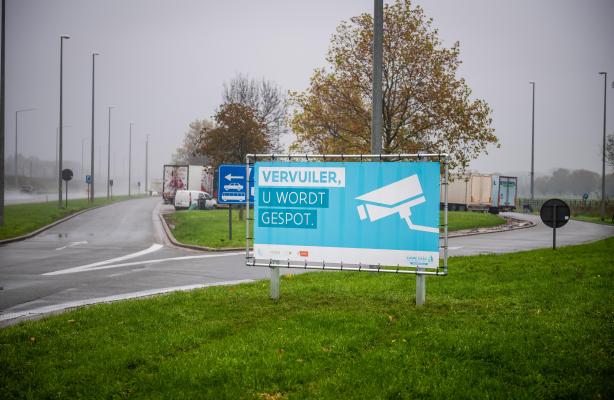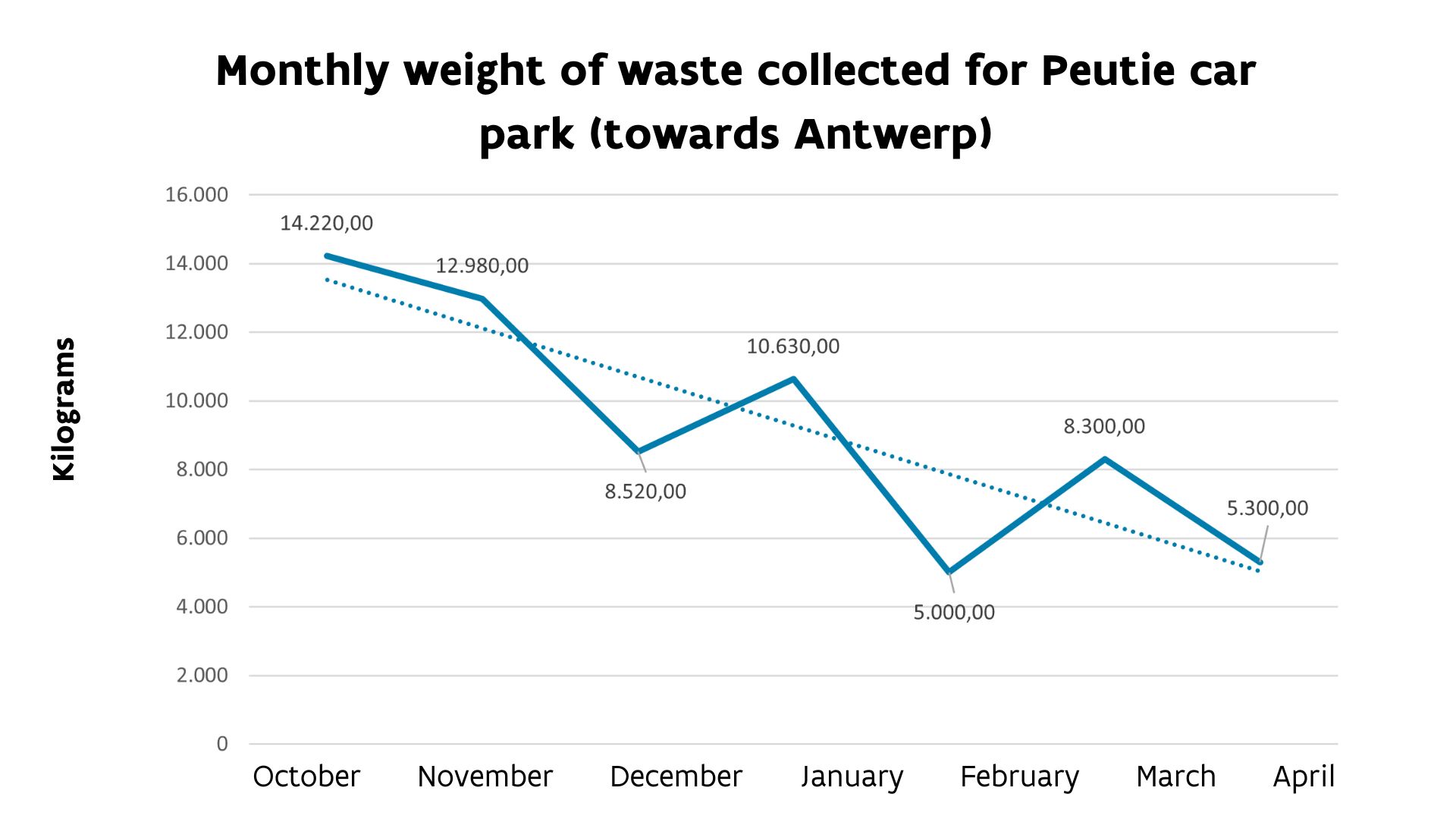Peutie motorway parking pilot project is a success

In June 2020, a growing issue with fly-tipping was identified at the Peutie (E19) motorway car park. This issue had been dragging on at that location for some time. All the actors involved therefore joined together in the search for structural solutions. During the discussion, the decision was taken to address the car park in the direction of Antwerp as a priority. Some cameras were already in place at the car park towards Brussels, so the problem there was less of an issue.
Objective
The project set the following research goals:
-
Reducing fly-tipping by enforcement through camera surveillance, flanked by awareness-raising communications.
-
Increasing the chances of catching fly-tippers.
-
Establishing a structural collaboration around dealing with litter and fly-tipping between all the actors involved.
-
Measuring the impact of camera deployment and flanking communications.
Measures
Camera surveillance
In the initial phase, three semi-removable cameras were installed at the car park in Peutie, focusing on the verge and ditch where the most and greatest fly-tipping occurred. The first three cameras were installed in November 2020.
After evaluation in January 2021, it was found that the fly-tipping problem had largely shifted to the side of the car park where cameras were not yet hanging. Two additional cameras were therefore installed on this side in February 2021. One of them was an ANPR camera. This was placed at the exit, allowing it to identify all vehicles through number plate recognition. The cameras were attached to the existing lighting poles and operated on a battery that was charged at night via the lighting pole's power supply.
In consultation with all the enforcement actors, the best possible process flow was drawn up for dealing with the camera images:
-
Step 1: the camera images were systematically reviewed by federal highway police and employees of waste intermunicipal companies Interza and Incovo. Based on the images, administrative reports were drawn up.
-
Step 2: The number plates identified were then linked by the federal highway police to the identity of the vehicle's owner. The administrative reports were then sent to the GAS (municipal administrative sanction) sanctioning officer.
-
Step 3: the sanction was finally transferred by the sanctioning official to the local authority where the GAS regulations are in force. For more major fly-tipping incidents, the federal highway police followed the criminal procedure through an official report based on the Materials Decree.
In addition, the Agency for Roads and Traffic (AWV) prepared a claim file for each violation to reimburse the clean-up costs. In order to respond to the GAS procedure's long processing time, a copy of the GAS determination and claim file was sent to the offender as soon as possible.
Communication
A banner was placed next to the cameras with the message "Polluter, you are being watched". The banner also included a camera icon to inform non-Dutch-speaking visitors.
The communication banner was installed at the same time as the cameras, in order to achieve maximum impact from the start of the pilot project. In addition, a sign referring to the Camera Act (a legal requirement) was placed at the car park entrance.
Impact measurement
To measure the impact of the measures, a baseline and impact measurement were conducted. The situation without measures (= the baseline measurement) was monitored from 1 October 2020 through 9 November 2020. The impact measurement started from 10 November 2020 to 1 April 2021. The following indicators were monitored:
-
The weight (kg) of waste collected, both properly disposed waste in the rubbish bins and fly-tipping in and around the rubbish bins, were measured. For this purpose, the rubbish lorry was weighed before and after the collection round at a nearby weighbridge. However, it was not feasible to make a breakdown between properly disposed waste and fly-tipping.
-
In addition, the number of administrative reports (GAS) and claims files was monitored. For each violation, various data was also noted, such as the amount of fly-tipping and nationality of the violator. This allows for a better understanding of the issue and potential solutions.

Results
The weight of the waste was measured based on the net weight of the lorry before and after the waste was picked up at the car park in Peutie (towards Antwerp). The weight consisted of both the contents of the rubbish bins (properly disposed waste and fly-tipping) and the fly-tipping found at the car park. Thus, there is no breakdown between waste in rubbish bins and fly-tipping.
A total of 74 weightings were performed: 16 weightings occurred in the period without measures (= baseline measurement) and 58 after measures were in place (= impact measurement). From February, the measures were adjusted – from three to five cameras – and we can consider the measurements thereafter a second impact measurement.
Since the implementation of the measures (November), we can observe a significantly decreasing trend. After the placement of the additional cameras (February), the curve continues to fall:

Thus, the measurements show that placing cameras has a positive effect on the weight of rubbish collected at the car park. An average of six tons less waste per month is collected during the months when the measures are in place. However, no split could be made between waste in the rubbish bins and fly-tipping on the grounds for practical reasons.
111 GAS official reports
There were 111 GAS administrative reports during the period from mid-November to 5 April 2021 (an average of 22 per month). So far, fines have been imposed by the sanctioning officer in 26 cases. An average of 18.5 GAS reports were drawn up per month during the pilot period.
Shifting of issues to neighbouring hotspots?
As part of the pilot project, no specific hotspots were monitored where the shifting of issues might occur. It was pointed out by the various stakeholders, however, that we should watch out for any potential shifting of issues.
The fly-tipping figures from the Interza and Incovo intermunicipal waste companies were consulted to determine whether there was a significant increase in fly-tipping in the nearby area that could be associated with the pilot project. These fly-tipping figures show that there is no significant increase in the nearby (Vilvoorde and Steenokkerzeel) and wider area (Interza and Incovo operational area) from the first quarter of 2021.
Therefore, it can be concluded that based on the available fly-tipping figures, no shifting of issues can be observed.
Continuation
Upon completion of the project and with the positive results in mind, AWV subsequently installed cameras in-house and the partners on the grounds continued with camera surveillance.